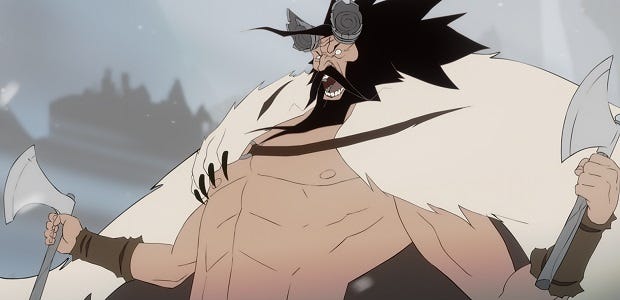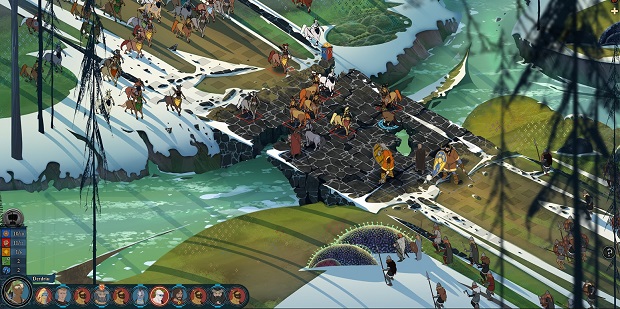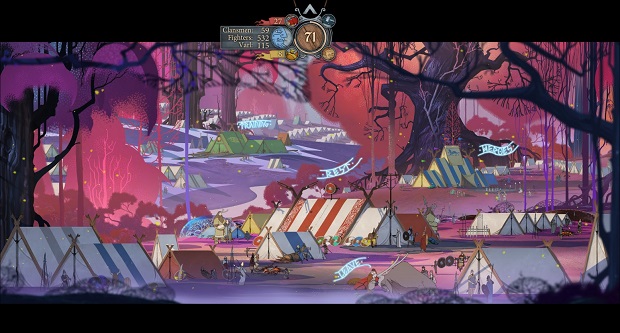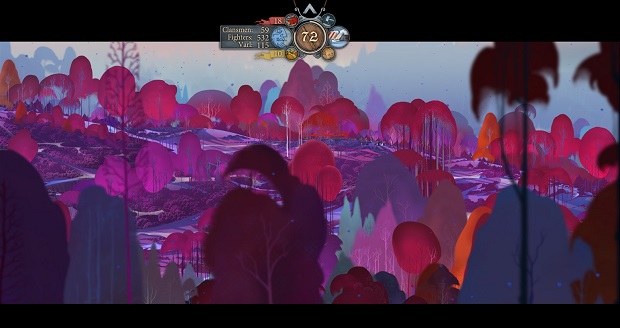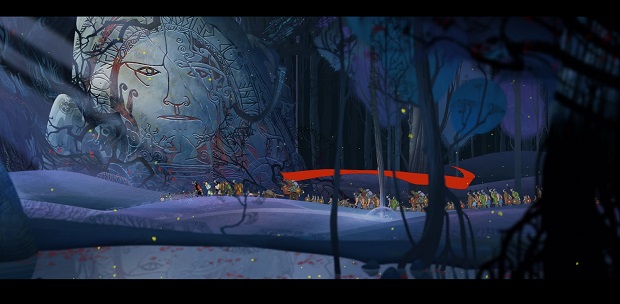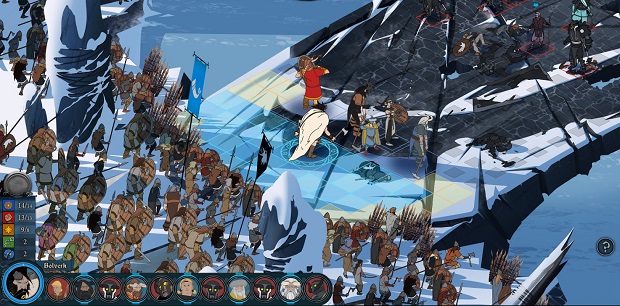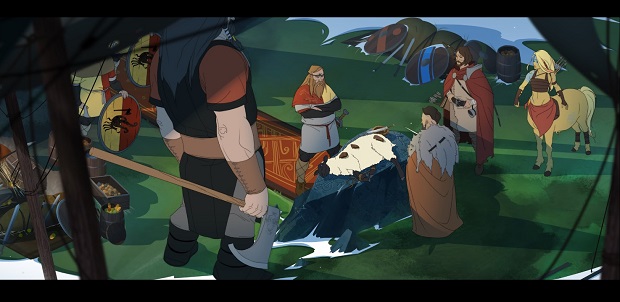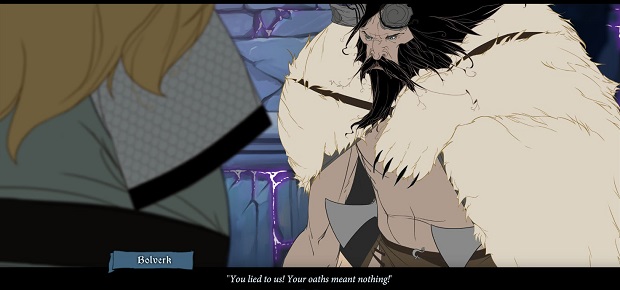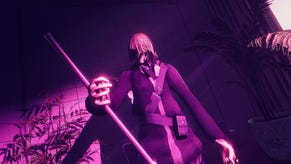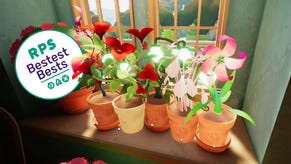Wot I Think: The Banner Saga 2
A strong second act
Despite its flaws, The Banner Saga [official site] is one of the most memorable indie releases of 2014, and now the second act is here to push the story to even more desperate frontiers. But does The Banner Saga 2 improve upon its predecessor's lackluster strategy combat while still expanding on its promising story? Here's wot I think. (Note: there are spoilers for the first Banner Saga's ending).
Let's cut to the chase: The Banner Saga 2 is much better than the first one. But just as much as the heroes struggle to reconcile their place in a dying world, so too does The Banner Saga 2 sometimes struggle to reconcile its different parts. It's still flawed, beautiful, and most of all, memorable. And whether or not you finished the first game, the improved combat alone makes The Banner Saga 2 worth coming back for.
The immortal Sundr, Bellower, is dead, and his host of dredge routed. But that victory means little as a mysterious darkness continues to spread from the north and a rampant giant serpent tries to gobble everything up. Picking up almost immediately where The Banner Saga left off, the second act is an even bleaker exploration of a dying world. You'll pick up the story playing as either Rook, the humble hunter-turned-chieftain, or his daughter, Alette, depending on which one survived the encounter with Bellower. With the loss of their only family still fresh, there's no time to mourn as the caravan sets off for the supposed safety of the human capital of Arberrang.
In many ways, The Banner Saga 2 is a direct extension of the first game. The formula of travelling, fighting, and decision-making has changed little between the two—at least when viewing them from a distance. Unlike other story-based trilogies, like Mass Effect, both acts of The Banner Saga could be played back-to-back as if they were one game. But looking closer, The Banner Saga 2 introduces subtle tweaks that make it a much more enjoyable experience.
Arguably the worst aspect of the first Banner Saga is the combat, which starts off promising before devolving into a samey slog as you battle the limited combinations of dredge again and again. Thankfully, The Banner Saga 2 does a much better job of living up to its strategic potential.
Playing out on a grid-based map, the turn-based combat will still challenge you to decide between attacking an enemy's strength or armour. Since strength represents both health and how much damage a character can dish out, the temptation to go straight for blood can be strong. But playing more conservatively and chipping away at armour in order to line up some more devastating blows later can be a much more sound tactic—especially against the stone-like dredge.
The improvements to The Banner Saga 2's combat don’t shake up its core formula but expand on it by adding a wealth of new classes and enemies. It was an excellent surprise to feel like each battle contained some new wrinkle keeping me on my toes. New enemy types range from variations of already established classes, like different types of dredge slingers, to entirely new creations. During one fight, I squared off against a group of unsettling monsters that were able to temporarily forge a link with my heroes and sap their strength. Even worse, should I attack one of them while the link was active, they would transfer the damage to whichever hero they were linked to. Considering how much the first Banner Saga reused the same foes again and again, I was shocked when I never encountered any of these monsters a second time.
The horseborn are the most prominent addition to the mix of human, giant-like varl, and dredge. The centaur-like creatures quickly became some of my favorite to use and fight against due to their ability to take a second movement action after attacking, making them deadly skirmishers. From a narrative angle, their introduction is less noteworthy, as they tend to feel like a cliche of primitive aboriginal cultures, which feels out of place next to the more subversive nuances of the varl and human societies.
Increases in the variation of enemy units and the strategies aren't the only refinements, either. Unlike the first game, where the fights always feel distinctly separate from the story, the lines between the two have been better blurred. Choices leading up to battles have a greater impact on the outcome—for better or for worse. There's also a much more fluid nature to combat that makes it unpredictable and often tense. Win conditions have been expanded beyond "kill everything" and are much more dynamic. In one fight, the rules changed suddenly when a new enemy stormed the field. If I could kill it, the other dredge would retreat, but doing so was a brutal gambit as more and more enemies flooded the map with each passing turn, requiring attention of their own.
Fortunately, your own strategic options have also been expanded. There's still the same routine of levelling up heroes, increasing their stats and unlocking new abilities, but there's plenty of new classes to play with. Many of them are more utilitarian than the rabble of warriors you had to choose from in the first game, and I loved experimenting with all of the new abilities and discovering powerful synergies. The poet is easily my favorite new addition, as his insult skill allowed me to push a specific enemy's turn to the back of the queue, effectively preventing them from making a move.
Sadly, the new potential in combat isn't always used skillfully, especially when it matters most. During one of the final battles, the moment was ruined because, suddenly, the rules were bent to make the fight more challenging. Without explanation, damaging the boss's armor had no effect, and I flailed around helplessly for a few turns before realising the poor attempt to usher me towards dealing with that boss in a very specific way. Given how much freedom I had in previous battles, this suddenly narrow approach to combat felt jarring. It's also annoying that The Banner Saga 2 would so carelessly rewrite its own rules. Fortunately, these slips feel small compared to The Banner Saga 2's larger successes.
While the combat is greatly improved, the same can't really be said for the caravan management, which still struggles to feel necessary to the rest of the game. Like The Banner Saga, I spent long stretches watching my caravan venture forward along a two dimensional trail while occasionally pausing to rest or make choices that impacted the wellbeing of my clan. But The Banner Saga 2 struggles to make many of these decisions meaningful. Buying supplies, managing morale, and balancing how many warriors and clansmen you have feel like they could be mostly ignored without much consequence as their impact on the combat and the story is, at times, negligible.
There's still that awkward tension between telling a somewhat linear story and giving players the freedom of managing their caravan, and too often The Banner Saga 2 sacrifices the latter to protect the former. During one nasty stretch of my trip, a series of bad decisions led to my troops having no food for almost a week. As morale dipped and clansmen and warriors died from starvation each day, there was barely any perceivable impact. Once I made it to the next village, I stocked up and replenished my ranks as if nothing bad had happened.
That isn't to say that The Banner Saga 2 isn't incapable of presenting interesting choices, but it does have a hard time making all of them feel like they're not just thin illusions. Later in the story, when the stakes were higher, I was painfully aware of the mortality of the people in my party. Choosing to send one of my heroes to hold off a group of oncoming dredge was a decision that filled me with dread as I knew they might never return. When they did, I felt like a huge weight had been lifted from my shoulders. But that tension can be ruined when you realize that these moments are predetermined. The Banner Saga 2 can sometimes feel like playing a session of Dungeons and Dragons with a spiteful dungeon master; no matter how well thought out a decision might be, if The Banner Saga 2 wants you to bleed, you'll bleed.
While the time spent with the caravan is the weak link in The Banner Saga's chain, it's failure as a system mostly feels like a missed opportunity rather than a thorn in my side. It's easy to forget about once the story picks up steam. Early on, the narrative splits between Rook (or Alette) and Bolverk, the savage leader of the Ravens. While the shifts in perspective from the first Banner Saga don't always feel natural, The Banner Saga 2 makes much better use of the technique to deliver two stories that throw one another into an intriguing contrast.
Rook's journey south to the human capital of Arberrang is still just as desperate as it always was, and the pain of losing his daughter creates some tender moments that gently prod the reality of grief and responsibility. But it was the chapters following Bolverk that I truly adored, as the brutish mercenary fights between his vicious nature and a mysterious weakness. There's enough freedom in his dialogue choices that let me shape Bolverk as a character, and I loved the way my decisions seemed to slightly melt his icy heart, making rare moments of vulnerability feel even more poignant. Bolverk also becomes central to the mystery surrounding the darkness engulfing the north, and the small teases of his relationship with a certain dredge are one of the plot threads I can't wait to see resolved.
In our review of the first game, Adam had argued that the second half becomes a slog largely thanks to the combat, but I'm pleased to say that the same isn't true for The Banner Saga 2. In fact, it's quite the opposite. The second half had me so wrapped up in wanting to see what happened next that I sprinted to the end credits over a single six hour stretch, enjoying each fight along the way.
The somber worldbuilding of the first game dramatically shifts during the second half of The Banner Saga 2, and the gorgeous artistic style flexes its muscles to deliver vistas that filled me with both awe and dread. Being the second act of a trilogy, I was concerned that The Banner Saga 2 would feel inconsequential to the greater arc of the story, but I can safely say that really isn't the case. While major revelations about the darkness that is forcing everyone south still remained unanswered, there are enough threads teased out that I'm satisfied. Most of all, the final quiet moments before the climax instill a powerful sense of distance. I was reminded of the the effect that the Lord of the Rings movies so elegantly accomplished and truly felt the many miles that had passed behind me.
The Banner Saga 2 is a beautiful sequel. There are moments where, as I watch the drama unfold in the dialogue and cutscenes, I almost forget I'm playing a game that came out in this decade. There's an evocative sense of timelessness about the story and world that few RPGs create. And now that the combat has become a strength and not a weakness, immersing myself in the richness of The Banner Saga's dying world is almost as enchanting as cracking open the weathered pages of my favorite fantasy novels.
The Banner Saga 2 is out today for Windows and Mac.
